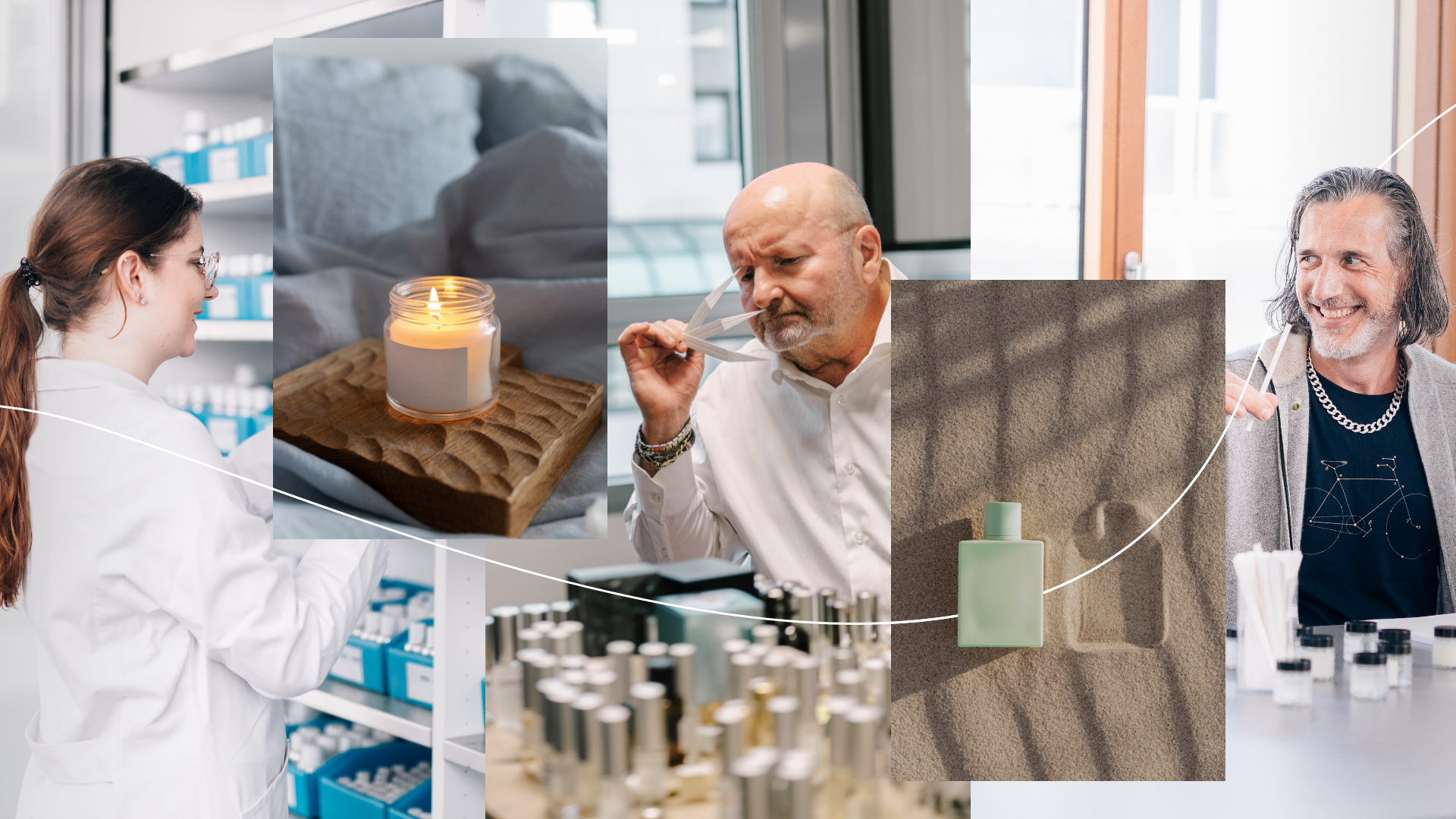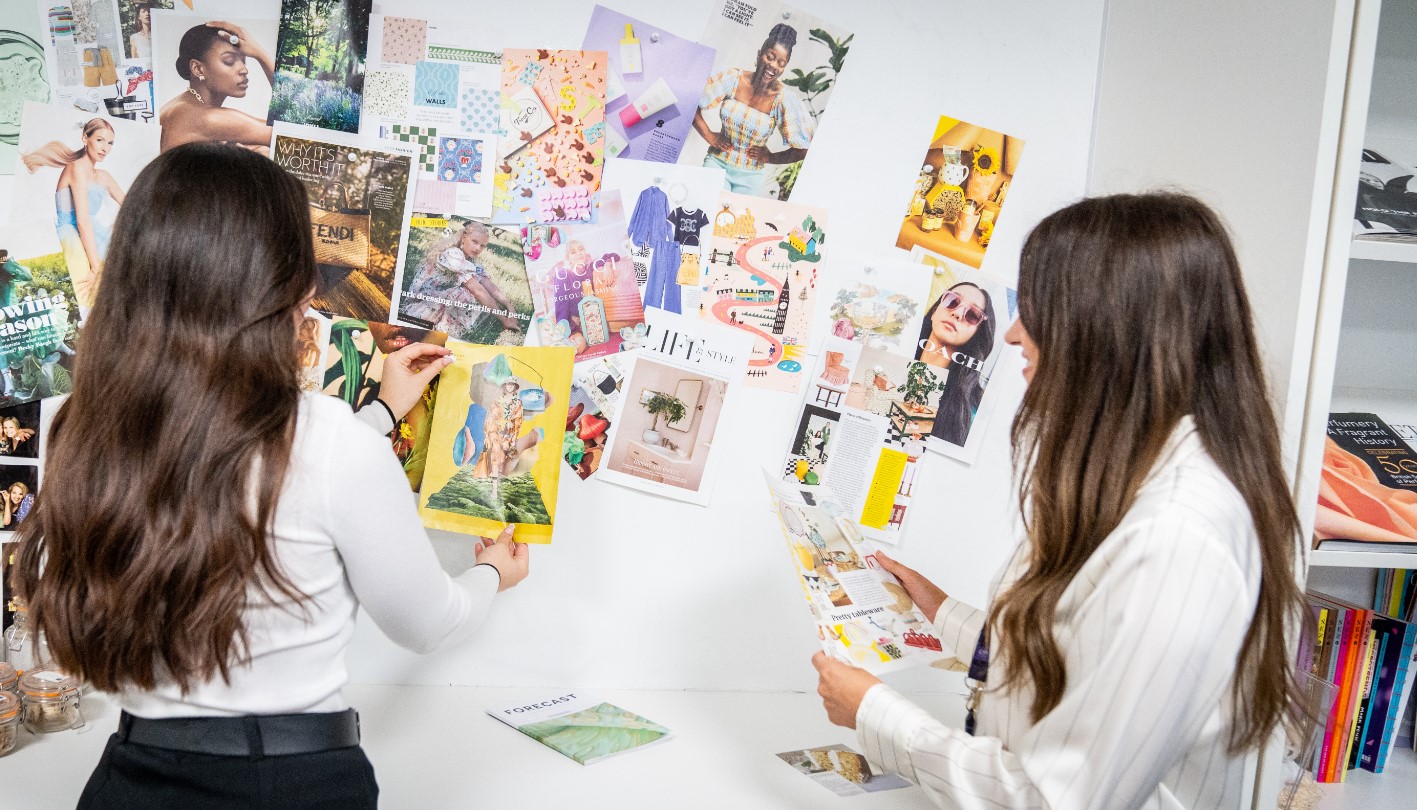Featured | 28 September 2022
The many considerations of fragrance creation
Many of us experimented with perfumery as children – combining flowers and water to create our own scents. But these homemade fragrances lacked the strength and staying power of commercial scents, and the disappointing final concoctions smelt far less appealing than the flowers they were made from. But why was this?

Perfumery is a careful balancing act, part art and part science. While it’s easy for most of us to tell what smells good, the actual creation of a scent involves many considerations and a level of expertise, to lead to a final formula that works chemically and creatively.
Let’s Create Together
For most fragrance creation, the catalyst is a customer brief. From this, we understand what you’re looking for from fragrance creation, including the final format the fragrance will be used in, the inspiration for the fragrance or wider theme for the product range, plus any ingredients you’d like to see included.
This brief is then presented to our team of experts who work to solve it. From marketing to perfumers, our teams discuss how to create a fragrance which not only fulfils your brief, but delights you and performs well.
Anticipating ingredient interactions
In any fragrance the ingredients are not being smelled in isolation. Instead, a blend of layered ingredients is being smelled together – which means perfumers have to be aware of how ingredients interact.
Not all ingredients combine together harmoniously, and sometimes what sounds like a jarring contrast of ingredients can smell incredible when expertly combined.
For example, while on its own synthetic ambergris may have a slight animalic scent that isn’t widely appealing, it’s prized as an invaluable fixative that helps build fragrance longevity – and as such is found across a wide range of fine fragrances.
Knowing how ingredients interact with one another is a skill built from years of experience and trial and error.
Creating to fit the application
From homecare products to fine fragrance, the final application for any scent should play a vital role in shaping the fragrance that’s created for it.
For example, in creating fragrance for candles and wax melts, perfumers must account for how it smells both unlit (cold throw), and as it burns (hot throw) to ensure an appealing final product that is not overpowering.
When creating a home fragrance for a reed diffuser, the scent must be strong enough to travel up the reed and disperse into the air naturally without the aid of heat to propel it. Therefore, even if a fragrance is created as part of the same collection as a scented candle it may need its formula and strength adjusted in order to smell identical.
In perfumery, the final product must cooperate and complement the unique combination of chemicals on a wearer's skin and react well to the natural heat of our bodies. Even when accounting for this, scents often smell different on individuals based on their own body chemistry.
These technicalities may appear overwhelming, but accounting for and working with them comes as second nature to experienced perfumers – and they’re factored into each scent CPL Aromas creates.
Telling a story through scent
Scent is not wholly a science. There is still considerable creativity needed to bring to life a fragrance that is not only chemically sound, but excites people too.
A fragrance is not simply stagnant once applied. As different ingredients evaporate at different rates, scents will be hugely different when smelled upon application compared to after an hour. In creating a new smell, all stages of this process must be accounted for.
The notes of any fragrance can be separated into three classes: top/head notes, middle/heart notes, and base notes. When blended together, the top, middle and base notes of a fragrance create something appealing and evolving: a scent that takes those who smell it on an experience with them as it changes.
More than meets the eye
Evocative and powerful, perfumery is an art that captures the attention of many. But it goes far beyond simply combining pleasant smelling ingredients to make something new.
When creating a fragrance, our perfumers rely upon both the creative expertise and chemical understanding of the fragrance world – both of which they’ve built up through years of training, experience and experimentation.
With each ingredient’s inclusion considered carefully and every quantity balanced, our perfumers are able to transform a concept into a finished fragrance which performs best in its chosen application.
Discover more about the creative talent behind our fragrance creations.


